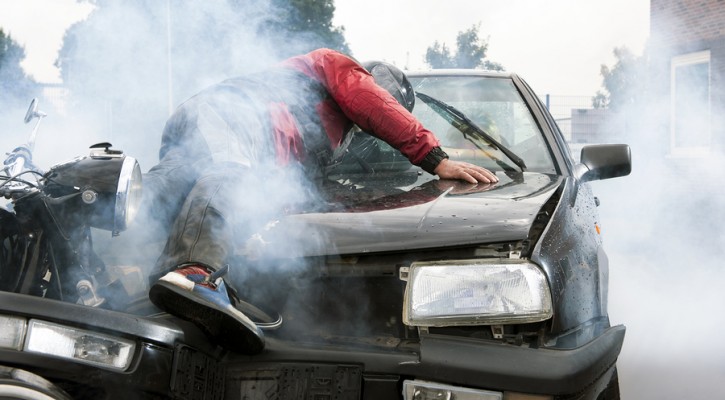
Distracted Driver Survival: Tip of the Day
June 24, 2014
Distracted driving is something all motorcyclists have to deal with. It is a fact of life. No matter how many laws are passed or how many awareness campaigns are run, some people just never learn.
That is, until it is too late. Don’t become a victim to distracted driving. Our survival tips will teach you how to handle that most deadly of highway breeds: the distracted driver.
So without further ado, we give you the first Distracted Driver Survival Tip of the Day: Never ever, ever, ever, ever stop in the middle of the lane.
When approaching a stop light or rolling to a stop in traffic, stop on the side of the lane, plan an escape route, and keep an attentive eye on the rearview mirror. Why? Because sometimes drivers fail to notice stopped traffic.
Using this strategy, you will see the distracted driver, have an escape route planned, and be half way out of harm’s way by the time they get within collision-distance. The motorcycle can be maneuvered onto the shoulder of the road, or between the cars ahead depending on the situation.
Using these Distracted Driver Survival Tips, motorcyclists can #ridesmart, #ridesafe, and #stayalive as they enjoy the ride.
Worst Traffic of All Time
June 23, 2014
Traffic is a brutal part of everyday life. However, this list from Forbes may make you see traffic in a whole new light. Sure, you might have to sit in a traffic jam for three or four hours, but that is nothing compared to these painful times in driving history:
Variable Speed Limits – A TxDOT Experiment
June 22, 2014
Texas drivers in San Antonio, Waco, and Eastland County may notice new speed limit signs on their daily commute – digital signs with variable speed limits that change throughout the day. The variable speed limit signs are part of a TxDOT pilot program designed to increase highway safety.
Speed limits will vary from current posted speed limits down to 30 mph, depending on how fast traffic is moving. Factors such as road conditions, weather and construction will also be taken into account. Changes will occur in 5 mph increments.
Drivers can be ticketed if they are caught violating the speed limits posted on the electronic signs.
The idea is to increase safety by warning drivers about the speed of traffic, as well as to prevent congestion before it starts. This strategy of spacing and pacing is used in other states, from Florida to Washington. The use of Active Traffic Management, or ATM, has had positive effects on traffic safety and congestion.
Eventually, the Texas Transportation Commission and the state Legislature will evaluate the TxDOT pilot program and decide whether or not to adopt the variable speed system.
Faster is Better?
June 20, 2014
Here at the Test Questions and Answers blog, we like to advocate for safe driving practices. We like to promote a safety-oriented driving style for all our new drivers. We also like to share the lesser-known facts of life on the road, things that you won’t learn from your local driving instructor.
With that in mind, we’d like to share a video with some counter-intuitive ideas (and surprising facts!) about speed limits. Mainly, the idea that sometimes faster is better.
Now, all you eager teenage speedsters shouldn’t get too excited. This video argues that raising speed limits could reduce traffic collisions. It does not advocate for breaking the law and driving over the speed limit. It certainly doesn’t advocate for street racing, or even driving faster than normal highway speeds.
Nevertheless, it’s always cool to learn something that shatters our common assumptions, our basic understanding of accepted realities. Now that you know something most others don’t, show off your new-found knowledge and share the story!
And remember, don’t just drive faster, #drivesafe.
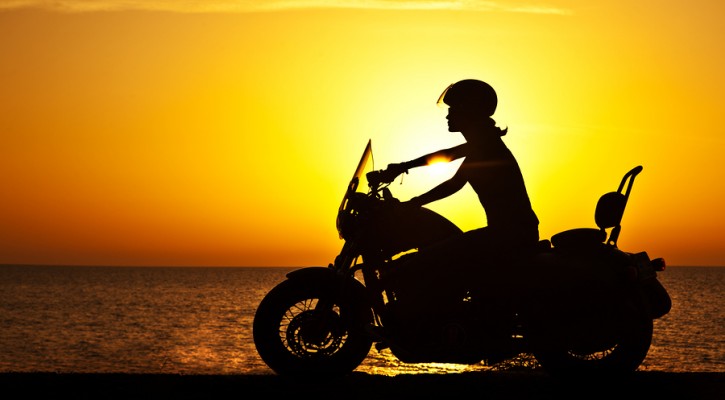
Riding Through the Dog Days of Summer
June 19, 2014
Some day very soon, this mild June weather will turn into the sweltering-hot dog days of summer that run through July and August. Warm 80 and 90-degree temperatures will heat up into the upper 90’s and 100’s, and when that day comes you don’t want be caught on a hot highway without proper preparation.
The danger of dehydration, heat exhaustion and heat stroke is deadly. Here are some tips for surviving those dog days of summer:
Plan Your Route Carefully. When it comes to choosing the coolest route for your summer ride, there are three major factors: traffic, shade and stop lights. The more stop lights and traffic jams, the hotter you will be on the road. The more shade, the cooler you will be. Simple as that.
Time Your Ride Carefully. Avoid the hours of peak heat between 2 PM and 4 PM. Spend that time at the lake, or in a nice, cool swimming pool.
Wear Cool Summer Gear. Breathable motorcycle jackets and pants turn your gear into an air-conditioning of sorts. The jacket and pants block the sun while letting air flow through, which works wonders for cooling you off as you ride.
Drink Lots of Water. This cannot be stressed enough. Even if you’re not thirsty, try to chug a couple glasses of water before hitting the road, and drink as frequently as possible. Freeze some water bottles to take with you, or carry an iced-down water jug. For hands-free sips while riding, wear a Camelback full of water.
Avoid Caffeine. Caffeine acts as a diuretic and pushes water out of your system. If you absolutely must have that cup of joe, then drink 8 oz. of water afterward.
Know the Signs of Dehydration. These signs include: less frequent urination (urine passed will be less in volume and darker in color), fatigue, headache, dizziness and cramps.
Know the Warning Signs of Heat Stroke:
- Throbbing headache
- Dizziness and light-headedness
- Lack of sweating despite the heat
- Red, hot, and dry skin
- Muscle weakness or cramps
- Nausea and vomiting
- Rapid heartbeat, which may be either strong or weak
- Rapid, shallow breathing
- Behavioral changes such as confusion, disorientation, or staggering
- Seizures
- Unconsciousness
It’s a beautiful and dangerous time of year for motorcyclists, so get out there and have fun armed with the street smarts it takes to survive the summer heat.
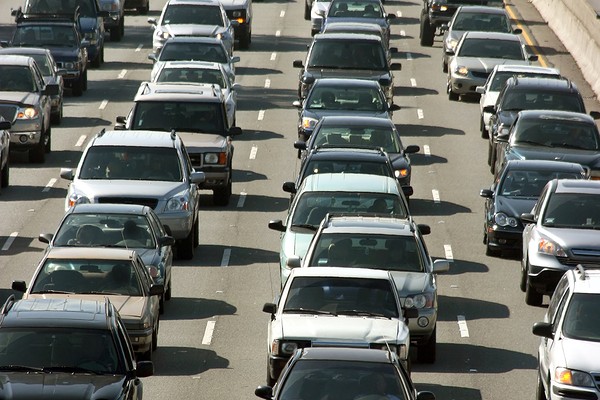
More Roads = More Traffic
June 18, 2014
Once upon a time, a major city tore down one of its most vital highways. A highway that carried 168,000 cars per day. They replaced that highway with a river, parkland and some smaller roads. And, guess what? Traffic didn’t get any worse. Instead many other things, such as pollution and quality of life, got better. It was a great day for urban planners all over the world.
How is this possible? How can it be that a reduction in highways doesn’t halt traffic and bring an industrious city to its knees?
You’d be forgiven if you have ever been stuck in traffic and thought “more lanes would help ease this congestion”. However, decades of research done by traffic engineers, economists and social scientists shows us that building more roads actually makes traffic worse. Here to explain why are the great guys writing over at Autopia:
What’s Up With That: Building Bigger Roads Actually Makes Traffic Worse | Autopia |
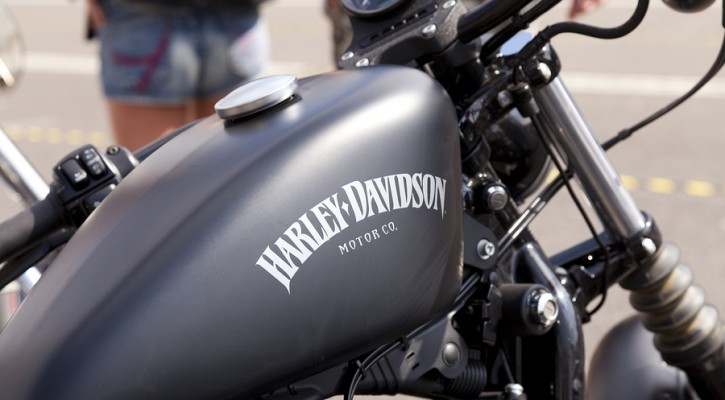
Motorcycle Theft in 2014
June 17, 2014
Motorcyclists have a lot of things to worry about. They have to survive potholes, slicks spots, road debris and wildlife crossings. They have to survive highways full of texting teens, road-rage speed demons, and fatigued mothers driving 2-ton SUV’s with distracting children. With all these worries, motorcycle theft may be the last thing any biker wants to think about.
So how worried should a motorcyclist be about their pride and joy? Well, it depends.
The NICB “Motorcycle Theft and Recovery Report” has been released for 2013, which can shed some light on motorcycle theft predictions for 2014. Here are some of the findings:
- There were 45,367 motorcycle thefts in the United States in 2013.
- The warmest months were also the months with the most thefts: July, August, September, and June were the top four, in that order.
- 2,060 U.S. counties reported motorcycle thefts in 2013; among them, Los Angeles County, California, ranked first by number of motorcycles stolen, while Fairfax County, Virginia, ranked first in theft rate by population (measured by number of thefts per 10,000 citizens).
- The top five brands stolen in 2013 were unchanged from 2012. Of the five, though, Harley-Davidson is the only one to show an increase in thefts (up 4 percent).
- The top five cities for motorcycle thefts are New York, Las Vegas, San Diego, Indianapolis and Los Angeles. The top four are unchanged from 2012; Los Angeles replaces Miami in the fifth slot.
If this list of facts causes some bikers to fret, we have a cure for that. Check out our previous post on protecting that pony from motorcycle theft:
Crash Compilation Video
June 16, 2014
Be careful out there. The asphalt is not a kind mistress.
And remember: All The Gear All The Time!
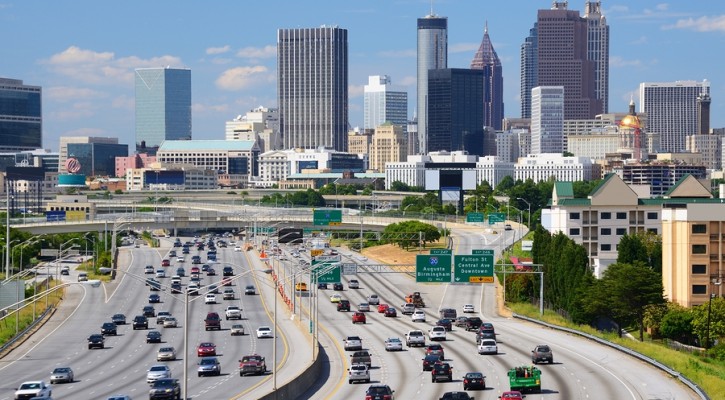
Riding on the Highway
June 14, 2014
Highways and interstates are not a motorcyclist’s natural habitat. No, bikers prefer the low-traffic back roads and country routes with pretty views and little congestion. However, sometimes highways are an unavoidable part of our daily commute, so it’s best to learn how to navigate them safely. Here are some tips for riding on the highway safely:
Tip 1 – Ride As If You Are Invisible
Motorcycles are more difficult to see than other cars, especially for drivers in trucks, SUV’s and 18-wheelers. Never assume that another vehicle can see you, and always pass with care.
Tip 2 – Wear Bright Clothes
The brighter your gear, the more visible you will be to other drivers. This is especially true for drivers who have been on the road for more than a few hours. As eye fatigue sets in, the bright colors of high-visibility clothing and helmets are much more noticeable.
Tip 3 – Avoid Tailgaters
Getting tailgated while on a motorcycle is extremely dangerous. Try to communicate using your brake lights and hand signals, and if that doesn’t work then move over a lane until they pass. Never, ever brake check.
Tip 4 – Ride to the Left or Right of the Lane
The center of the lane is far more slippery due to oil, radiator and brake fluid deposits. If you are in the right lane, ride on the right side to avoid catching turbulence from passing vehicles.
Tip 5 – Turbulence
When passing trucks, be aware that you will get hit with a strong wind after overtaking them. The body of the truck blocks the wind as you pass, and as you clear the vehicle a strong turbulence may blast you to the left. Be ready for it.
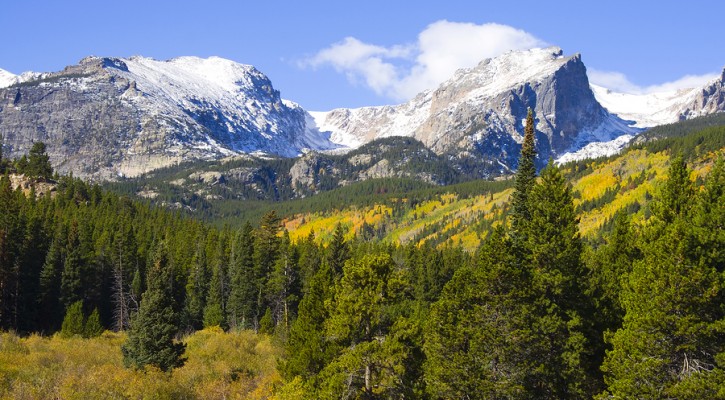
Ride Through the Clouds
June 13, 2014
You don’t have to ride fast to fly through the clouds, at least not when your road trip weaves through the Rocky Mountains. Check out this video ( shot in motorcycle-vision) for your own taste of cruising through the Rocky Mountain National Park. It’s one route every rider must experience, especially during this gorgeous summer weather.
